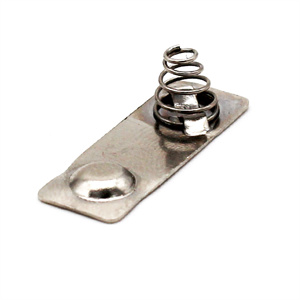The Heat Treatment Of Battery Contact
The heat treatment of battery contact is a crucial step in the battery manufacturing process, which is crucial for improving the performance, stability, and durability of battery contact. Battery contact is usually made of metal or alloy, and its microstructure, mechanical properties, and electrochemical performance can be changed through heat treatment to meet the requirements of the battery system.
The heat treatment of battery contact usually includes the following steps:
Annealing: Annealing is a heat treatment process that heats the battery to a certain temperature and then slowly cools it. This process can eliminate the internal and residual stresses generated by the material during the manufacturing process, improve its plasticity and toughness, and make it easier for subsequent processing and forming.
Quenching: Quenching is the process of heating a battery to a critical temperature and then rapidly cooling it. This process can form microstructures with high hardness and strength, improving the wear resistance and corrosion resistance of battery contacts. However, the quenched material is usually brittle, so subsequent tempering treatment is required.
Tempering: Tempering is the process of reheating the quenched battery to a lower temperature, holding it for a period of time, and then slowly cooling it. This process can eliminate the internal stress and brittleness generated during the quenching process, while maintaining a certain level of hardness and strength. The battery contact after tempering treatment usually has better mechanical and electrochemical properties.
Aging treatment: Aging treatment is a heat treatment process that involves long-term insulation, typically carried out at lower temperatures. This process can further improve the microstructure and performance of battery contact, eliminate residual stress and instability in the material, and enhance the long-term stability and durability of battery contact.
The heat treatment process for battery contact needs to be determined based on specific material types, sizes, and usage requirements. By using a reasonable heat treatment process, the performance of battery contact can be optimized, and the contact effect and current transmission efficiency between the battery and the battery system can be improved, thereby enhancing the overall performance and safety of the battery.
In addition, during the heat treatment process of battery contact, attention should also be paid to controlling parameters such as heating temperature, insulation time, and cooling speed to ensure the desired heat treatment effect is achieved. At the same time, strict inspection and testing of the battery contact after heat treatment is also necessary to ensure that its quality and performance meet the requirements.
The heat treatment of Battery Contacts has the following key functions:
Optimized conductivity: Appropriate heat treatment can improve the crystal structure of the battery contact material, reduce crystal defects, and thereby improve the conductivity and ensure efficient current transmission between the battery and the equipment. For example, heat-treated copper battery contacts enhance their conductivity and reduce the loss of electrical energy during transmission.
Enhanced hardness and abrasion resistance: heat treatment can increase the hardness of battery contact, make it more wear-resistant during frequent plugging and contact, and maintain good contact performance. For example, in some high-frequency battery equipment, the heat-treated battery contacts can withstand long-term friction without significant wear.
Improved fatigue resistance: battery contacts experience repeated deformation and stress in use. Heat treatment can enhance the fatigue resistance of materials and extend the service life of battery contacts. For example, in the battery system of electric vehicles, the heat treated contacts can withstand the stress changes caused by long charge and discharge cycles.
Stable size and shape: eliminate residual stress inside the material through heat treatment, prevent the battery contact from deformation during use, so as to ensure the stability of its size and shape, and ensure the tight and reliable connection with the battery and equipment.
Improved corrosion resistance: Some heat treatment processes can form a protective film on the contact surface of the battery to enhance its resistance to environmental corrosion factors, especially in wet or chemical environments.
We are a professional manufacturer of Battery Contact with over 20 years of production and processing experience. We look forward to working with you.
